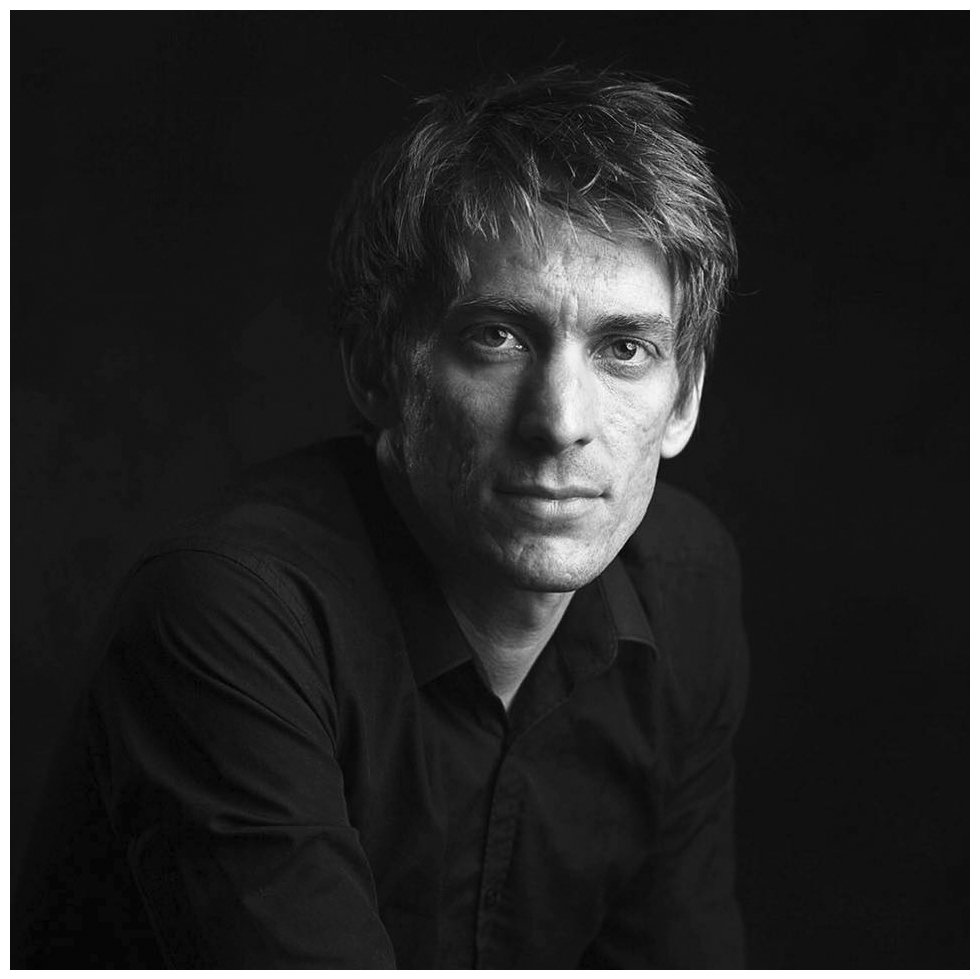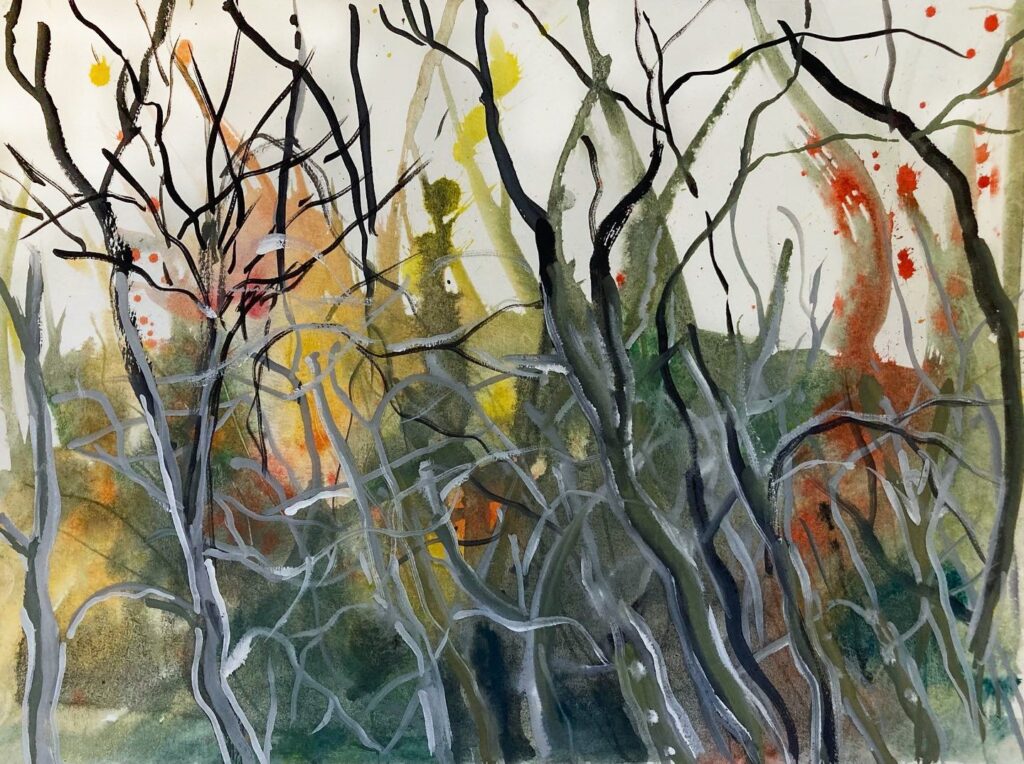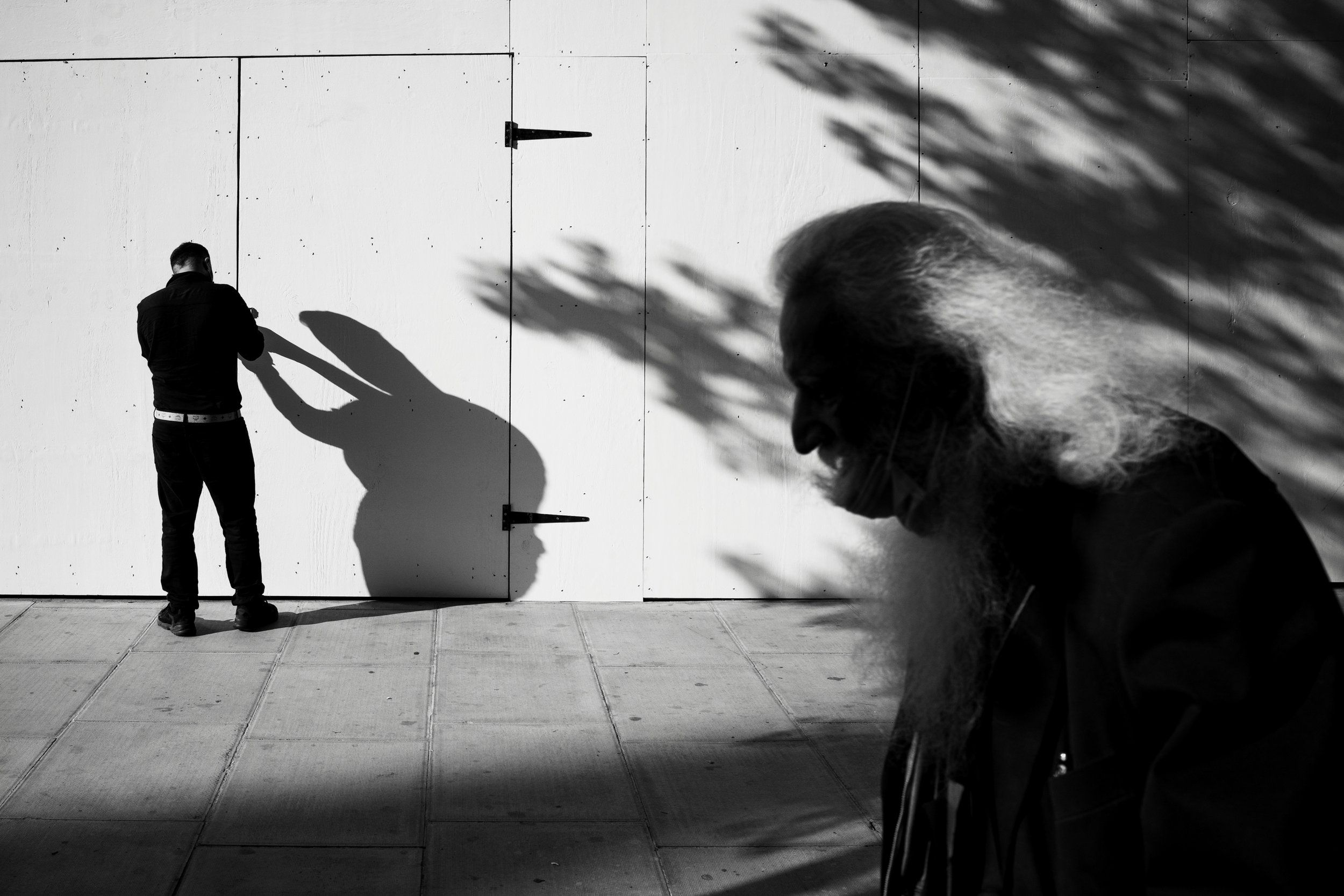Shy artists might feel threatened by the stars of the internet dominating the art scene but away from the spotlight there is still hope for success.
With the increasing dominance of social media, artists are under more pressure than ever to promote themselves online. A handful have enjoyed overnight success as they use their online personality to boost their audience. But for many this can feel daunting, unnatural or even impossible to replicate.
Talented street photographer, Sean Tucker, who considers himself to be introverted has found building his Youtube channel to be really challenging. Even after ten years of making videos he has to fight the anxieties that come with promoting himself online. He says: “Anxiety tells me when I post I’m going to be judged and criticised, it can feel crippling and I have to make a choice against that, I can’t wait for the feeling of wanting to post to come around because maybe it never will. I have to treat it like a job.”
Only recently, he posted a video about fighting the urge to quit but despite this he hasn’t let his reserved nature deter him. He has consistently produced countless videos; enriched with insight and inspiration he has racked up half a million subscribers on his Youtube channel.

Photo Credit: Sean Tucker
Tucker initially developed the courage to talk in front of large audiences when he worked as a pastor in a church in South Africa. His photography career started through working as an inhouse photographer for a furniture company. A career route which provided him stability but didn’t fulfil him creatively. Deciding to leave this corporate setting he chose to pursue a more creative career which has grown alongside his desire to give back to the world of photographers. This driving force pushed him to fight against his anxieties, so he started a YouTube channel.
He is not motivated by the material objects of the world around him: “It’s not about how much money I can get because that’s a never-ending pool, you’ll never be satisfied if that’s your goal for success.” He says, “But if I can reach an audience through my photography and make a difference to people, then that feels meaningful.”
Switching from a corporate career path to a creative job he enjoys, keeps him engaged with his audience: “I’m energised because I enjoy what I do. Posting doesn’t take energy out of me, it takes courage, it means making a choice and I try to be quite disciplined about it because it’s my job.”
Tucker is an artist who was able to overcome his anxieties through his courage. His desire to work in a creative industry has allowed him to do a job he enjoys. But many artists are unable to do this as they are held back by their fears and anxieties.
The fears and anxieties that these artists share are often rooted in their childhood. If they learned in a negative environment then this can impact how they express themselves as an adult. Psychotherapist Maria Kurth explains:
“If an artist has been criticised in their youth and doesn’t have the capacity to review or reflect on this in a supportive environment then they can turn these negative words inward. They start believing them and start criticising themselves, so I think that’s probably the biggest pitfall for many people in art.” Artists that have otherwise been brought up in a positive, safe, loving environment will find it much easier to flourish.
It’s important for an artist to be able to talk about their work in order to build a closer relationship with the audience. Sean Tucker says: “Often you follow people before you follow their work because we’re fascinated by the human and if you don’t let people in a little bit it’s harder to build an audience.”
The rapid rise of platforms like TikTok and big online personalities means the competition in the industry is higher than ever before, making it so much more challenging to gain recognition. Despite this, it does signify a new era of opportunity. There are many social media platforms available in 2025 which don’t force artists to put their face on camera. Sean Tucker suggested using Substack, a platform providing people with a space to reach an audience through blogging about their work.
Artists might still find it difficult to run a blog as they often use their art as a mouthpiece for personal topics they may struggle to talk about, Kurth explains: “Art is so revealing you are totally exposed, when people criticise it, laugh at it or don’t understand it, people will take it personally as they’ve given away a part of themselves through their work.” Social media makes it easy for artists to lose control over how their art is represented and shared. This can lead to the meaning of their work being diluted or lost. It can be really challenging for artists to promote their work, but it is possible to overcome these obstacles. Away from social media many introverts have still managed to find success through their resilience, creativity and through their communities.
Beverley Isaacs, an artist from North London says constantly working online doesn’t work for her: “When I work I prefer to work in isolation. Being reserved is a common thread among artists and I do think it is more conducive for creating something meaningful.”
Isaacs once lived next to Frank Auerbach, a painter who was considered to be one of the best of his time: ”I don’t know how he would’ve navigated the world of social media” She says, “he was a recluse he didn’t care about fame he just wanted to paint all the time. When he started out he was so poor he could only afford one colour of oil paint, but that didn’t stop him from carrying on.”
Isaacs hasn’t felt the need to use social media to further develop her career: “Artistic success through using an online persona makes me feel sick, I find it really shallow.” Instead she believes you can grow your audience with the help of a close knit community, “A big way to earn exhibition opportunities is through meeting and working with like minded artists who also enjoy working in isolation.”

Photo Credit: Beverley Isaacs
She recently earned a coveted scholarship to study at the Royal College of Arts (RCA), which has provided her with lots of opportunities and industry connections. Most people of course aren’t lucky enough to attend the RCA and if you aren’t exposed to a community like this then it can be a lot tougher to earn recognition in the industry.
Isaacs once lived next to Frank Auerbach, a painter who was considered to be one of the best of his time: ”I don’t know how he would’ve navigated the world of social media” She says, “he was a recluse he didn’t care about fame he just wanted to paint all the time. When he started out he was so poor he could only afford one colour of oil paint, but that didn’t stop him from carrying on.”
Isaacs hasn’t felt the need to use social media to further develop her career: “Artistic success through using an online persona makes me feel sick, I find it really shallow.” Instead she believes you can grow your audience with the help of a close knit community, “A big way to earn exhibition opportunities is through meeting and working with like minded artists who also enjoy working in isolation.”
She recently earned a coveted scholarship to study at the Royal College of Arts (RCA), which has provided her with lots of opportunities and industry connections. Most people of course aren’t lucky enough to attend the RCA and if you aren’t exposed to a community like this then it can be a lot tougher to earn recognition in the industry.
Tucker believes there still are ways around this however, like directly promoting your work to galleries or even through making free prints for local coffee shops to hang up. Inevitably it will involve lots of energy, determination and rejection before you start reaping the fruits of your labour. Isaacs says:
“It’s not easy to get a gallery, it takes legwork, you need to do a lot of research to make sure you approach the right gallery for your style, you can’t just choose ten names and bombard them all you need to be selective and build a relationship with those people.”
This change in approach will also require a change in expectations, Tucker explained: “Most people quit because they get angry, they share their photography and not enough people like it, if you promote yourself locally by knocking on the doors of local galleries you need be realistic that when you sell your photo book you’re only going to sell to the people who know your work locally.”
This might sound discouraging, for those who really struggle with working on social media but a smaller local audience can be liberating for an artist.
An anonymous artist who uses the pseudonym Maya, works with a group called Artists Anonymous. She says: “It keeps my artistic freedom because when you work under your own name, you’re forced to stick with a style and we want to avoid our artistic freedom being clipped at all costs.”
Anonymous art exhibitions provide artists who feel uncomfortable exhibiting their work, with their name attached, a space to do this. There are also other ways of exhibiting work Maya explains: “If you have an exhibition and you’re not comfortable talking about your work because you might be shy, you can get a friend to step in for you and represent you on the day.”
Shy artists don’t need to feel disillusioned by the digital direction of the art world. Building an audience will always be vital for artists to survive. Through persistence and creativity, more reserved artists have shown it is possible to enjoy their own definitions of success.

